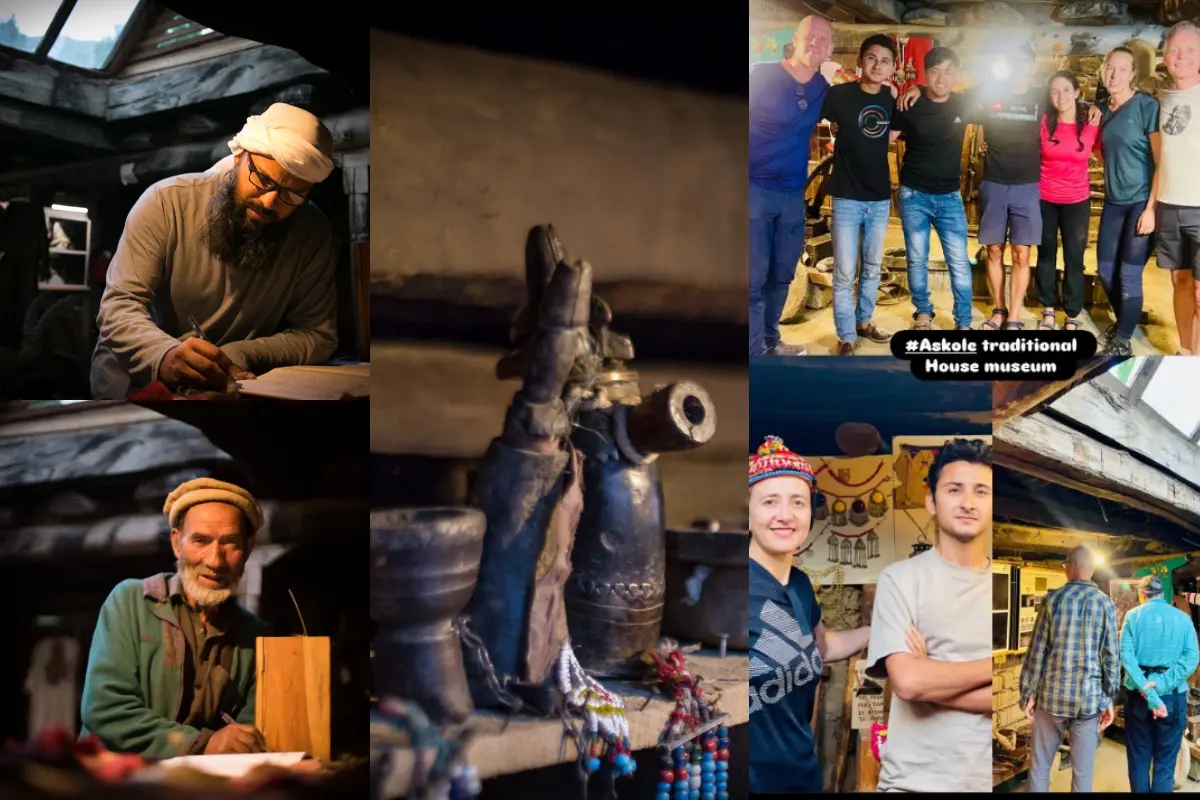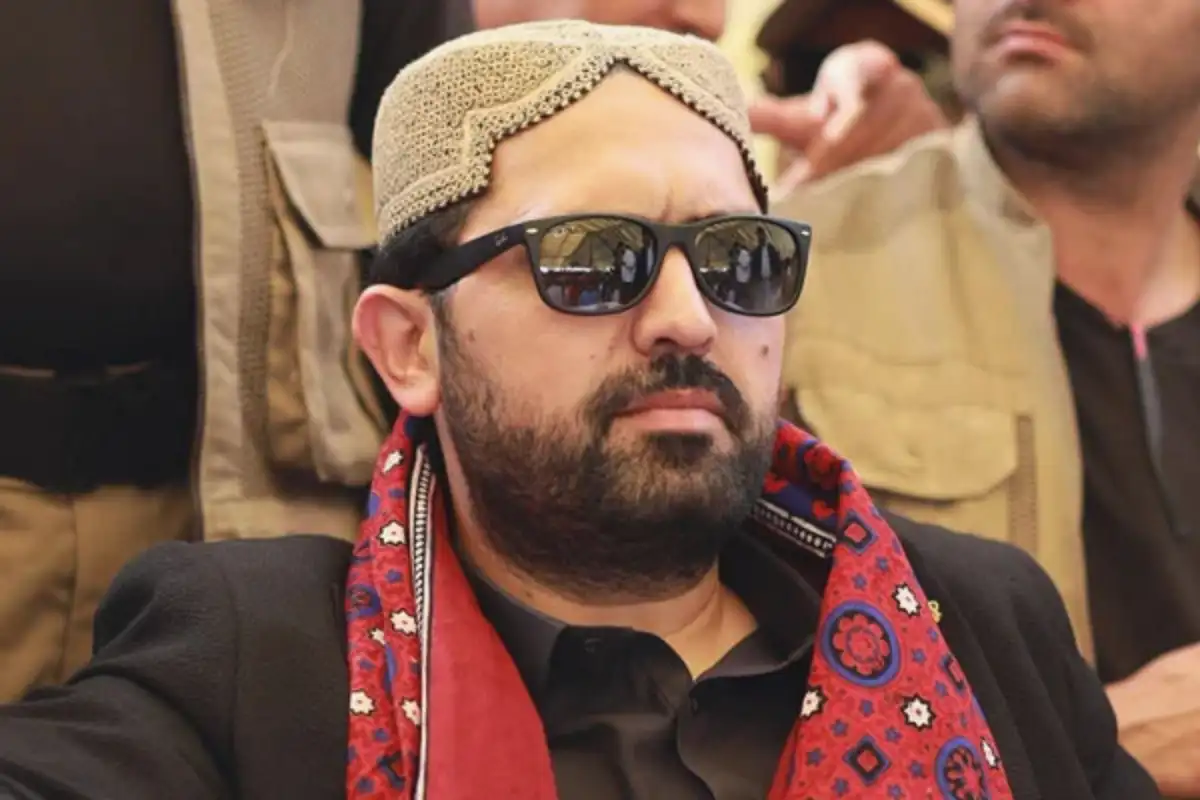Askole Museum: Where Himalayan Culture Comes Alive

Askole Museum: Where Himalayan Culture Comes Alive
Long ago, three brothers, Ghud, Chod, and Sangar—came from Yarkand (in present-day China) and crossed the Mustagh Pass in search of a better place to live. After arriving in Askole, they dug holes in the ground to test the land. When water emerged, they knew it was fertile and decided to settle there. This marks the beginning of Askole and nearby villages.
People in the Braldu Valley, where Askole is located, are believed to have originally come from Yarkand. A local leader, Abdullah Khan, suggested that their ancestors first came from Tibet, passed through Yarkand, and then moved into the Braldu Valley. The Karakoram mountain range once served as a route between Yarkand and Kashmir, but it was eventually abandoned.
Early Visitors and Travel
In the 1800s, early European travelers visited this remote area. One noted that Askole was the last village in the valley, while another reported that the village was fortified with defensive walls to protect it from potential attacks.
Until the early 1900s, two main travel routes were commonly used:
A trail from Skardu to Askole via several villages.
A path from the Shigar Valley over the Biafo Glacier to Yarkand.
Both journeys were long and challenging due to the difficult terrain.
Religion and Culture
Islam was introduced to Baltistan in the 16th century by Sufi (Islamic mystic) teachers. Before that, the people practiced Buddhism and Bon (an ancient Tibetan religion). Over time, most of the region’s people converted to Islam.
By the 1900s, the majority of the Baltistan population were Shia Muslims, strongly influenced by Sufi teachings. While Persian and Urdu languages gained popularity, the native Balti language continues to be spoken widely.
Traditions and Life
People in the region maintain rich cultural traditions, some of which reflect their Buddhist and Tibetan roots. These include:
Wearing masks during festivals
Beliefs in spirits and the supernatural
The use of special woven baskets
These customs persist alongside Islamic practices. Extended family households are still the norm, where several generations live together under one roof.
Upper Braldo Valley
Geography and Villages
The Upper Braldo Valley is located in a high-altitude mountain region. Villages lie near the Braldo River and are nourished by water from streams and glaciers. This makes the land fertile and suitable for farming.
Askole is the most notable village—it is the last inhabited settlement before mountaineers begin treks to K2 and the Baltoro Glacier. Until recently, Askole was accessible only by foot. Now, a jeep road connects it to the rest of the valley.
Village Layout and Housing
Most villages are situated close to each other on flat lands near the river. Others are built on terraces high above the valley. Small paths and footbridges link the settlements. Testey and Mongrong, built on steep land, are more isolated and less typical in layout.
Houses are traditionally made from stone and wood, with two levels: the lower level for animals and the upper for people. Some buildings serve as barns or mills. In Testey, flat roofs are used for drying food and as terraces.
Villages are usually organized around open communal areas, with narrow paths between homes. Water is collected from nearby streams for drinking and irrigation. A julfa (cableway) was once used to carry goods across the river near Askole.
Farming and Fields
People farm on terraced land supported by stone walls to prevent erosion. Though farming is difficult due to steep slopes and occasional flooding, villagers have created flat fields to grow crops.
Satellite images show that only the green, irrigated areas are cultivated. Steep mountain slopes remain unused.
Modern Changes
Today, modern tools and transport have made life somewhat easier, though many traditional practices are still maintained. Tourists visit the valley for trekking and mountaineering.
Most residents live in extended families and depend on farming and livestock. Some men work as porters and guides for mountain expeditions.
Traditional Clothing of Askole: A Glimpse into Himalayan Heritage
Wool and Animal-Skin Clothing
Historically, Askole was self-sufficient. Villagers made clothing from local resources like sheep wool and animal skins. Women spun and wove wool at home. The resulting garments were warm, durable, and practical for the region’s freezing climate.
Women’s Attire
Women wore long, dark woolen robes with colorful embroidery or trinkets. Hairstyles were done in small Tibetan-style braids. Accessories included brass pins and large silver or brass disks worn on the chest.
A notable piece of attire was the Selho coat, tied at the waist with a woven belt. Head coverings such as scarves or heavy wool wraps were essential for warmth and modesty.
Men’s Attire
Men wore simple but functional woolen robes fastened with belts. In cold weather, heavy cloaks were worn. Traditional red felt hats adorned with cowrie shells and lead ornaments were once popular.
Influence of Trade and Modernization
As trade routes opened and expeditions increased, traditional attire began to incorporate cotton linings, synthetic fabrics, and machine-made materials. Today, traditional clothes are worn mostly during festivals and cultural ceremonies.
Life and Agriculture in Askole: Sustaining Traditions in the Karakoram
Seasonal Farming
Agricultural life in Askole follows seasonal rhythms. During the autumn harvest, villagers use dzzo (a yak-cow hybrid) to thresh wheat. Traditional foods include:
Wheat bread, often with butter (ranzal)
Buckwheat porridge, especially in winter
Fresh vegetables like radish, peas, and turnips
Dairy and Livestock
Butter is made using wooden churns, often by children. Sheep and goats are herded daily to grazing lands by young shepherds. Livestock such as cows, donkeys, yaks, and goats are vital for food, transport, and agriculture.
Twice a year, herds are moved to higher pastures to maintain soil fertility in lower areas.
Women’s Roles
Women work in the fields during the summer alongside children, managing irrigation, weeding, and harvesting. They also churn butter, prepare food, and manage household affairs. Their contributions are central to village life.
Irrigation and Climate
Water is sourced from melting glaciers and streams via hand-dug canals. Terraced fields and stone walls help control floods. In autumn, trees like willow and poplar turn golden, signaling the season’s end.
Life Inside a Traditional House: The Kazā Level of Askole
The Kazā (or Jameāla)
The Kazā is the underground level of Askole homes and serves as the main living and cooking space during harsh winters. It’s built with thick stone walls, mud insulation, and wooden beams for warmth.
Access is via a wooden ladder (besk) from the floor above (Sangon), used for sleeping and storage.
Living Area
At the center is a fireplace (baskon) used for cooking and warmth. A stone bowl next to the hearth keeps tea or soup warm. Around it, families gather for meals and storytelling.
Cabinets called shargom store religious or valuable items, often placed in decorative wall niches.
Wood Carvings and the Balti Level
Symbolism and Architecture
Wood carvings in Askole homes reflect spiritual beliefs from Tibetan and Kashmiri traditions. Common symbols include:
Argali (wild sheep) motifs
Swastikas (both Bon counterclockwise and Buddhist clockwise versions)
Endless knots, sunbursts, rosettes, and lotus flowers
These appear on doors, beams, pillars, and furniture, offering protection and blessings.
The Balti Level
The Balti is a mid-level wooden platform used for:
Drying grains, food, and animal skins
Storing chests (hur) and containers (garang)
Socializing, especially by women in summer
Homes are multi-leveled, with animal stables below, living spaces above, and flat roofs for drying goods or accessing neighboring houses.
Village Layout and Infrastructure
Architecture
Homes in Askole use:
Stone foundations
Mud brick and timber walls
Willow roofs (tsakir) for insulation
Buildings often share walls and are stacked vertically, connected by ladders and rooftops.
Community Life
Villages are organized around extended families (khel) sharing:
Kitchens, storage, and irrigation
Animal sheds and compost areas
Religious centers like the Imam Bargah for Shia ceremonies
Many structures are built partially underground for insulation and food storage. Water is distributed via wooden pipes from glacial sources.
Preservation and Contemporary Relevance
Though modern materials are now used in new buildings, traditional homes remain culturally important. Challenges include:
Shortage of skilled artisans
Scarcity and cost of quality timber
Smoke ventilation and insulation problems
Still, Askole’s architecture—through its carved symbols, tiered designs, and adaptive layouts—continues to embody resilience, heritage, and spiritual depth.
Conclusion
Askole is more than just the last village before the great Karakoram peaks—it is a living museum of culture, survival, and identity. From its underground Kazā hearths to the wooden Balti terraces, from its carved argali pillars to the fields irrigated by glacial melt, Askole preserves a rich legacy in harmony with the mountains that surround it.
Catch all the Pakistan News, Breaking News Event and Trending News Updates on GTV News
Join Our Whatsapp Channel GTV Whatsapp Official Channel to get the Daily News Update & Follow us on Google News.













